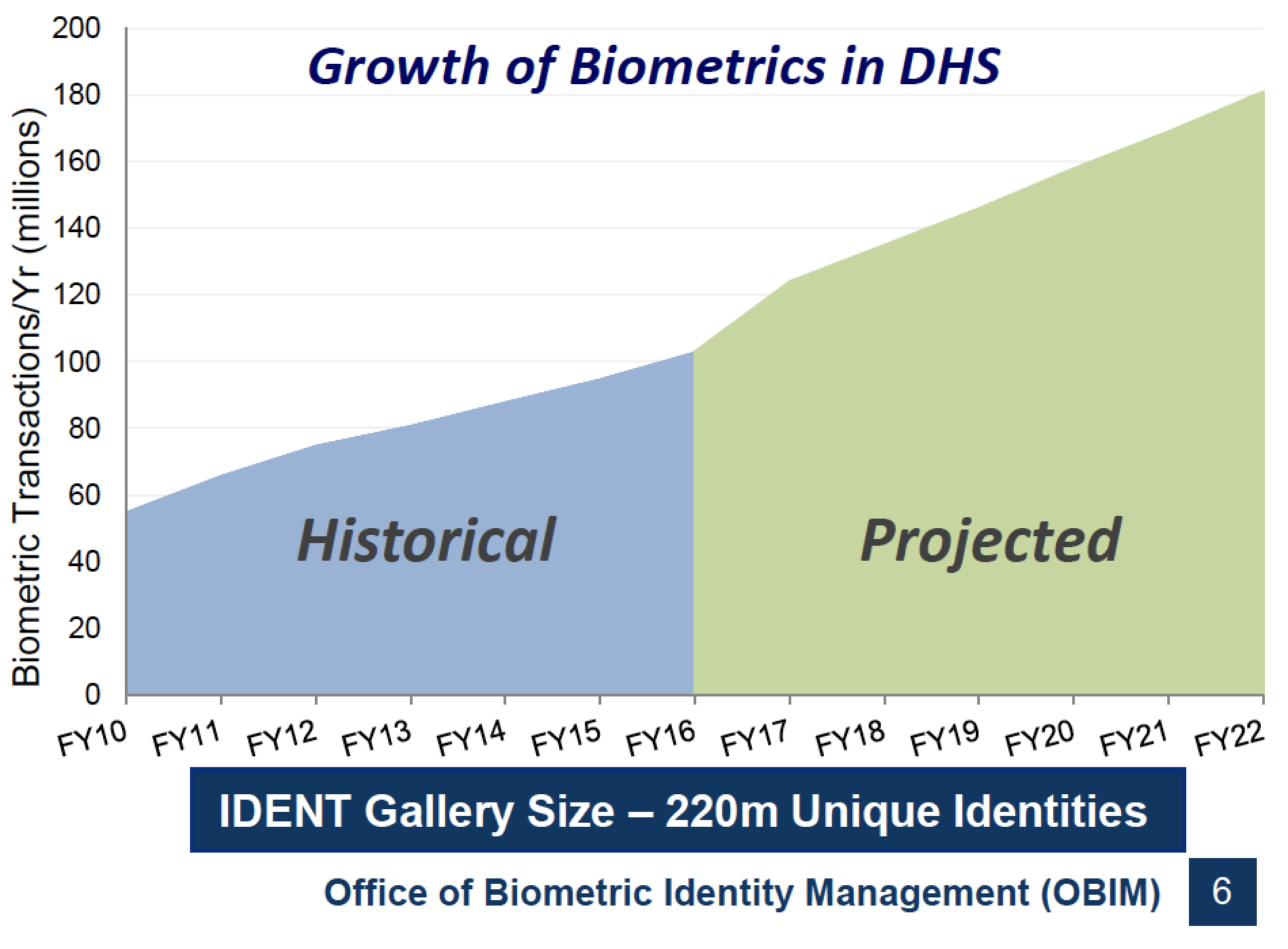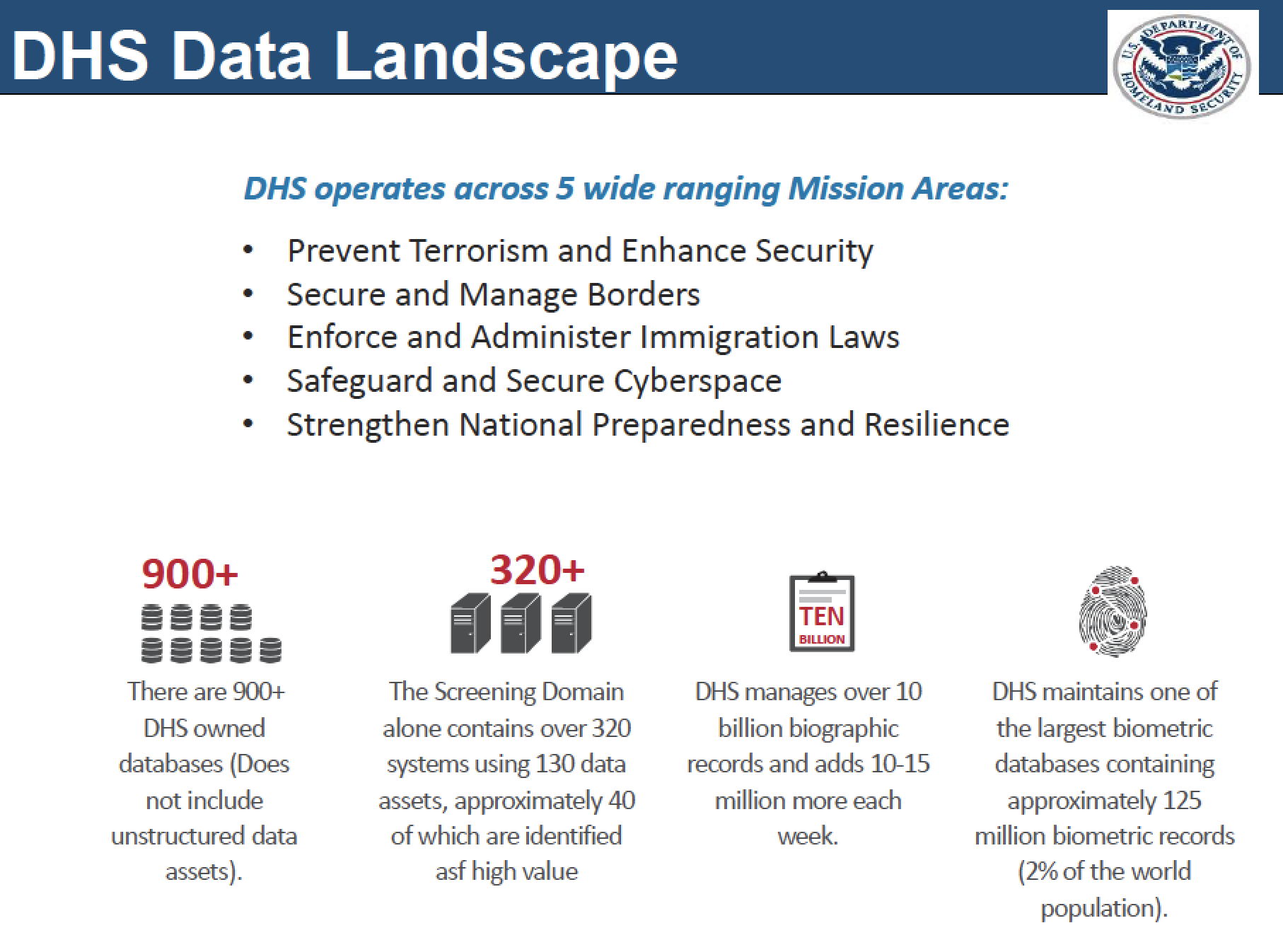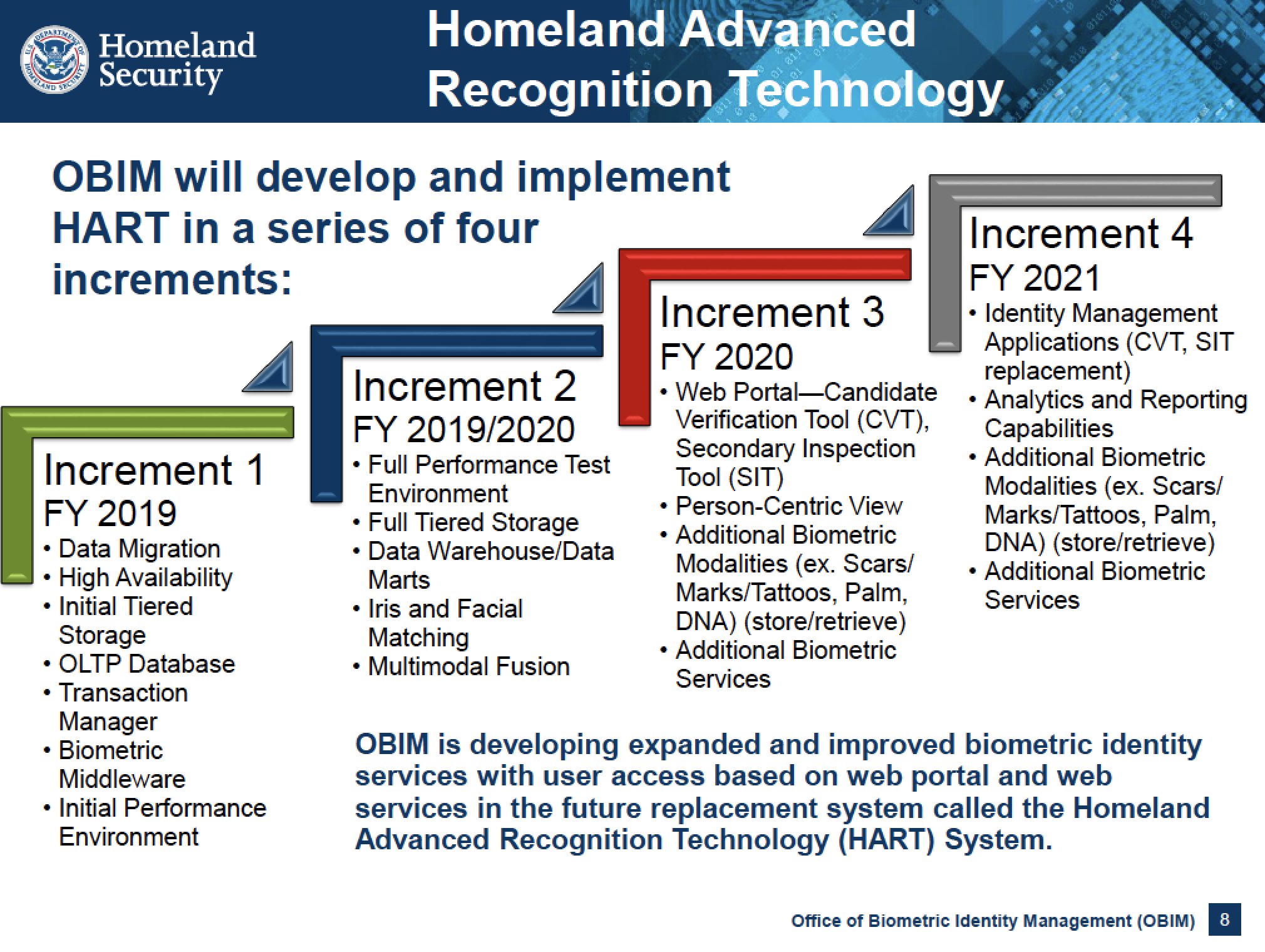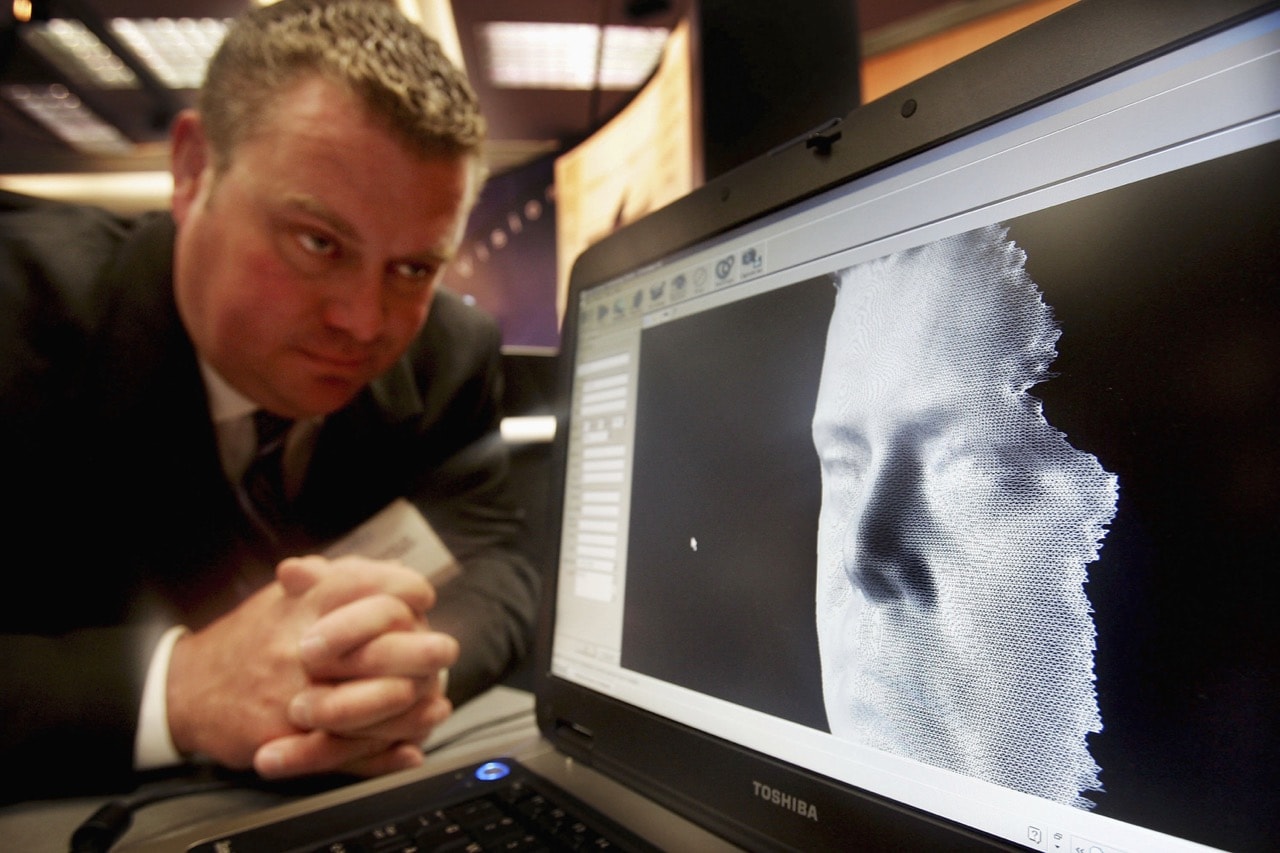The massive new database will include biometric and biographic records, alongside information about people's private relationships. So why do we know so little about it?
This statement was originally published on eff.org on 7 June 2018.
The U.S. Department of Homeland Security (DHS) is quietly building what will likely become the largest database of biometric and biographic data on citizens and foreigners in the United States. The agency’s new Homeland Advanced Recognition Technology (HART) database will include multiple forms of biometrics – from face recognition to DNA, data from questionable sources, and highly personal data on innocent people. It will be shared with federal agencies outside of DHS as well as state and local law enforcement and foreign governments. And yet, we still know very little about it.
The records DHS plans to include in HART will chill and deter people from exercising their First Amendment protected rights to speak, assemble, and associate. Data like face recognition makes it possible to identify and track people in real time, including at lawful political protests and other gatherings. Other data DHS is planning to collect – including information about people’s “relationship patterns” and from officer “encounters” with the public – can be used to identify political affiliations, religious activities, and familial and friendly relationships. These data points are also frequently colored by conjecture and bias.
In late May, EFF filed comments criticizing DHS’s plans to collect, store, and share biometric and biographic records it receives from external agencies and to exempt this information from the federal Privacy Act. These newly-designated “External Biometric Records” (EBRs) will be integral to DHS’s bigger plans to build out HART. As we told the agency in our comments, DHS must do more to minimize the threats to privacy and civil liberties posed by this vast new trove of highly sensitive personal data.
DHS Biometrics Systems – From IDENT to HART
DHS currently collects a lot of data. Its legacy IDENT fingerprint database contains information on 220-million unique individuals and processes 350,000 fingerprint transactions every day. This is an exponential increase from 20 years ago when IDENT only contained information on 1.8-million people. Between IDENT and other DHS-managed databases, the agency manages over 10-billion biographic records and adds 10-15 million more each week.
DHS’s new HART database will allow the agency to vastly expand the types of records it can collect and store. HART will support at least seven types of biometric identifiers, including face and voice data, DNA, scars and tattoos, and a blanket category for “other modalities.” It will also include biographic information, like name, date of birth, physical descriptors, country of origin, and government ID numbers. And it will include data we know to by highly subjective, including information collected from officer “encounters” with the public and information about people’s “relationship patterns.”
HART will Impinge on First Amendment Rights
DHS plans to include records in HART that will chill speech and deter people from associating with others.
DHS’s face recognition roll-out is especially concerning. The agency uses mobile biometric devices that can identify faces and capture face data in the field, allowing its ICE (immigration) and CBP (customs) officers to scan everyone with whom they come into contact, whether or not those people are suspected of any criminal activity or an immigration violation. DHS is also partnering with airlines and other third parties to collect face images from travelers entering and leaving the U.S. When combined with data from other government agencies, these troubling collection practices will allow DHS to build a database large enough to identify and track all people in public places, without their knowledge – not just in places the agency oversees, like airports, but anywhere there are cameras.
Police abuse of facial recognition technology is not a theoretical issue: it’s happening today. Law enforcement has already used face recognition on public streets and at political protests. During the protests surrounding the death of Freddie Gray in 2015, Baltimore Police ran social media photos against a face recognition database to identify protesters and arrest them. Recent Amazon promotional videos encourage police agencies to acquire that company’s face “Rekognition” capabilities and use them with body cameras and smart cameras to track people throughout cities. At least two U.S. cities are already using Rekognition.
Read the full analysis on EFF’s site.

DHS slide showing growth of its legacy IDENT biometric database

DHS slide showing breadth of DHS biometric and biographic data

DHS slide showing expansion of its new HART biometric and biographic database



